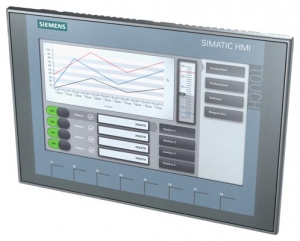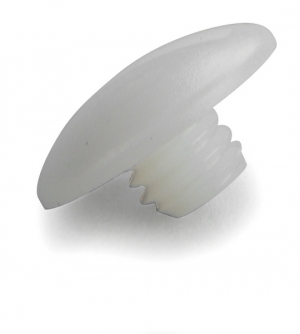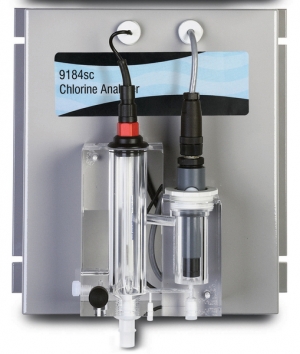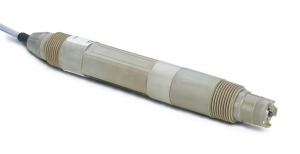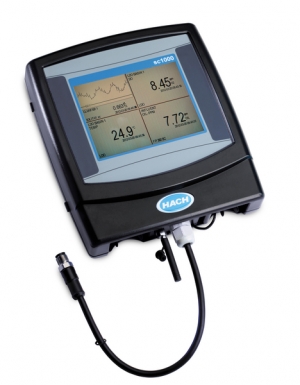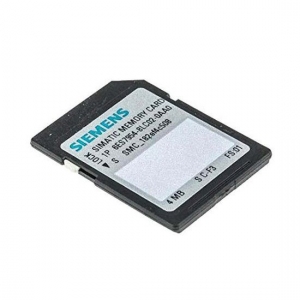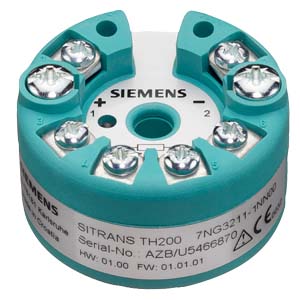Input | |
Resistance thermometer | |
Measured variable | Temperature |
Sensor type | |
| Pt25 … Pt1000 |
- According to JIS C 1604; a = 0.00392 K-1
| Pt25 … Pt1000 |
| Ni25 … Ni1000 |
| Via special characteristic curve (max. 30 points) |
Sensor factor | 0.25 ... 10 (adaptation of the basic type, e.g. Pt100 to version Pt25 ... 1000) |
Units | °C or °F |
Connection | |
| 1 resistance thermometer (RTD) in 2-wire, 3-wire or 4-wire connection |
| 2 identical resistance thermometers in 2-wire connection for generation of average temperature |
| 2 identical resistance thermometers (RTD) in 2-wire connection (RTD 1 – RTD 2 or RTD 2 – RTD 1) |
Connection | |
| Wire resistance can be configured ≤100 Ω (loop resistance) |
| No trim necessary |
| No trim necessary |
Sensor current | ≤ 0.45 mA |
Response time | ≤ 250 ms for 1 sensor with break monitoring |
Break monitoring | Always active (cannot be switched off) |
Short-circuit monitoring | Can be switched on/off (default value: ON) |
Measuring range | Assignable (see "Digital measuring error" table) |
Min. measuring span | 10 °C (18 °F) |
Characteristic curve | Temperature-linear or special characteristic curve |
Resistance-based sensor | |
Measured variable | Ohmic resistance |
Sensor type | Resistance-based, potentiometers |
Units | Ω |
Connection | |
| 1 resistance-based sensor (R) in 2-wire, 3-wire or 4-wire connection |
| 2 resistance-based sensors in 2-wire connection for averaging |
| 2 resistance thermometers in 2-wire connection
(R1 – R2 or R2 – R1) |
Connection | |
| Wire resistance can be configured ≤100 Ω (loop resistance) |
| No trim necessary |
| No trim necessary |
Sensor current | ≤ 0.45 mA |
Response time | ≤ 250 ms for 1 sensor with break monitoring |
Break monitoring | Always active (cannot be switched off) |
Short-circuit monitoring | Can be switched on/off (default value: OFF) |
Measuring range | Assignable max. 0 ... 2200 Ω (see "Digital measuring error" table) |
Min. measuring span | 5 Ω ... 25 Ω (see "Digital measuring error" table) |
Characteristic curve | Resistance-linear or special characteristic curve |
Thermocouples | |
Measured variable | Temperature |
Sensor type (thermocouples) | |
| Pt30Rh-Pt6Rh acc. to IEC 584 |
| W5%-Re acc. to ASTM 988 |
| W3%-Re acc. to ASTM 988 |
| NiCr-CuNi acc. to IEC 584 |
| Fe-CuNi acc. to IEC 584 |
| NiCr-Ni acc. to IEC 584 |
| Fe-CuNi acc. to DIN 43710 |
| NiCrSi-NiSi acc. to IEC 584 |
| Pt13Rh-Pt acc. to IEC 584 |
| Pt10Rh-Pt acc. to IEC 584 |
| Cu-CuNi acc. to IEC 584 |
| Cu-CuNi acc. to DIN 43710 |
Units | °C or °F |
Connection | |
| 1 thermocouple (TC) |
| 2 thermocouples (TC) |
| 2 thermocouples (TC) (TC1 – TC2 or TC2 – TC1) |
Response time | ≤ 250 ms for 1 sensor with break monitoring |
Break monitoring | Can be switched off |
Cold junction compensation | |
| With integrated Pt100 resistance thermometer |
| With external Pt100 IEC 60751 (2-wire or 3-wire connection) |
| Reference junction temperature can be set as fixed value |
Measuring range | Assignable (see "Digital measuring error" table) |
Min. measuring span | Min. 40 ... 100 °C (72 ... 180 °F) (see "Digital measuring error" table) |
Characteristic curve | Temperature-linear or special characteristic curve |
mV sensor | |
Measured variable | DC voltage |
Sensor type | DC voltage source (DC voltage source possible over externally connected resistance) |
Units | mV |
Response time | ≤ 250 ms for 1 sensor with break monitoring |
Break monitoring | Can be switched off |
Measuring range | - -10 ... +70 mV
- -100 … +1100 mV
|
Min. measuring span | 2 mV or 20 mV |
Overload capability of the input | -1.5 ... +3.5 V DC |
Input resistance | ≥ 1 MΩ |
Characteristic curve | Voltage-linear or special characteristic curve |
Output | |
Output signal | 4 ... 20 mA, 2-wire |
Auxiliary power | 11 ... 35 V DC (to 30 V with Ex ia and ib; to 32 V with Ex nA/nL/ic) |
Max. load | (Uaux – 11 V)/0.023 A |
Overrange | 3.6 ... 23 mA, continuously adjustable (default range: 3.80 mA ... 20.5 mA) |
Error signal (e.g. in case of sensor breakage) (conforming to NE43) | 3.6 ... 23 mA, continuously adjustable (default value: 22.8 mA) |
Sample cycle | 0.25 s nominal |
Damping | Software filter 1st order 0 ... 30 s (parameterizable) |
Protection | Against reverse polarity |
Galvanic isolation | Input against output 2.12 kV DC (1.5 kVrms AC) |
Measuring accuracy | |
Digital measuring error | See "Digital measuring error" table |
Reference conditions | |
| 24 V ± 1% |
| 500 Ω |
| 23 °C |
| > 5 min |
Error in the analog output (digital/analog converter) | < 0.025% of measuring span |
Error due to internal reference junction | < 0.5 °C (0.9 °F) |
Effect of ambient temperature | |
| 0.02% of measuring span/10 °C (18 °F) |
| |
- With resistance thermometers
| 0.06 °C (0.11 °F)/10 °C (18 °F) |
| 0.6 °C (1.1 °F)/10 °C (18 °F) |
Auxiliary power effect | < 0.001% of meas. span/V |
Effect of load impedance | < 0.002% of meas. span/100 Ω |
Long-term drift | |
| - < 0.02% of measuring span
|
| |
| |
Operating conditions | |
Ambient conditions | |
Ambient temperature | -40 ... +85 °C (-40 ... +185 °F) |
Storage temperature | -40 ... +85 °C (-40 ... +185 °F) |
Relative humidity | < 98%, with condensation |
Electromagnetic compatibility | According to EN 61326 and NE21 |
Structural design | |
Material | Molded plastic |
Weight | 50 g (0.11 lb) |
Dimensions | See "Dimensional drawings" |
Cross-section of cables | Max. 2.5 mm²² (AWG 13) |
Degree of protection according to IEC 60529 | |
| IP40 |
| IP00 |
Certificates and approvals | |
ATEX explosion protection | |
EC type-examination certificate | PTB 05 ATEX 2040X |
- "Intrinsic safety" type of protection
| - II 1 G Ex ia IIC T6...T4 Ga
- II 2 (1) G Ex [ia Ga] ib IIC T6...T4 Gb
- II 3 (1) G Ex [ia Ga] ic IIC T6...T4 Gc
- II 3 G Ex ic IIC T6…T4 Gc
- II 2 D Ex ia Db
|
- "Increased safety" type of protection
| II 3 G Ex ec IIC T6...T4 Gc |
Explosion protection: FM for USA | |
| FM 3024169 |
| - IS / Cl I, II, III / Div 1 / GP ABCDEFG T6, T5, T4
- Cl I / ZN 0 / AEx ia IIC T6, T5, T4
- NI / Cl I / Div 2 / GP ABCDFG T6, T5, T4
- NI / Cl I / ZN 2 / IIC T6, T5, T4
|
Explosion protection to FM for Canada (cFMUS) | |
| FM 3024169C |
| - IS / Cl I, II, III / Div 1/ GP ABCDEFG T6, T5, T4
- NI / Cl I / DIV 2 / GP ABCD T6, T5, T4
- NIFW / Cl I, II, III / DIV 2 / GP ABCDFG T6, T5, T4
- DIP / Cl II, III / Div 2 / GP FG T6, T5, T4
- Cl I / ZN 0 / Ex ia IIC T6, T5, T4
- Cl I / ZN 2 / Ex nA nL IIC T6, T5, T4
|
Other certificates | EAC Ex, NEPSI |
Software requirements for SIPROM T | |
PC operating system | Windows ME, 2000, XP, Win 7, 8 and 10; in connection with RS 232 modem, also Windows 95, 98 and 98 SE |




 Giỏ hàng
Giỏ hàng  Danh mục sản phẩm
Danh mục sản phẩm